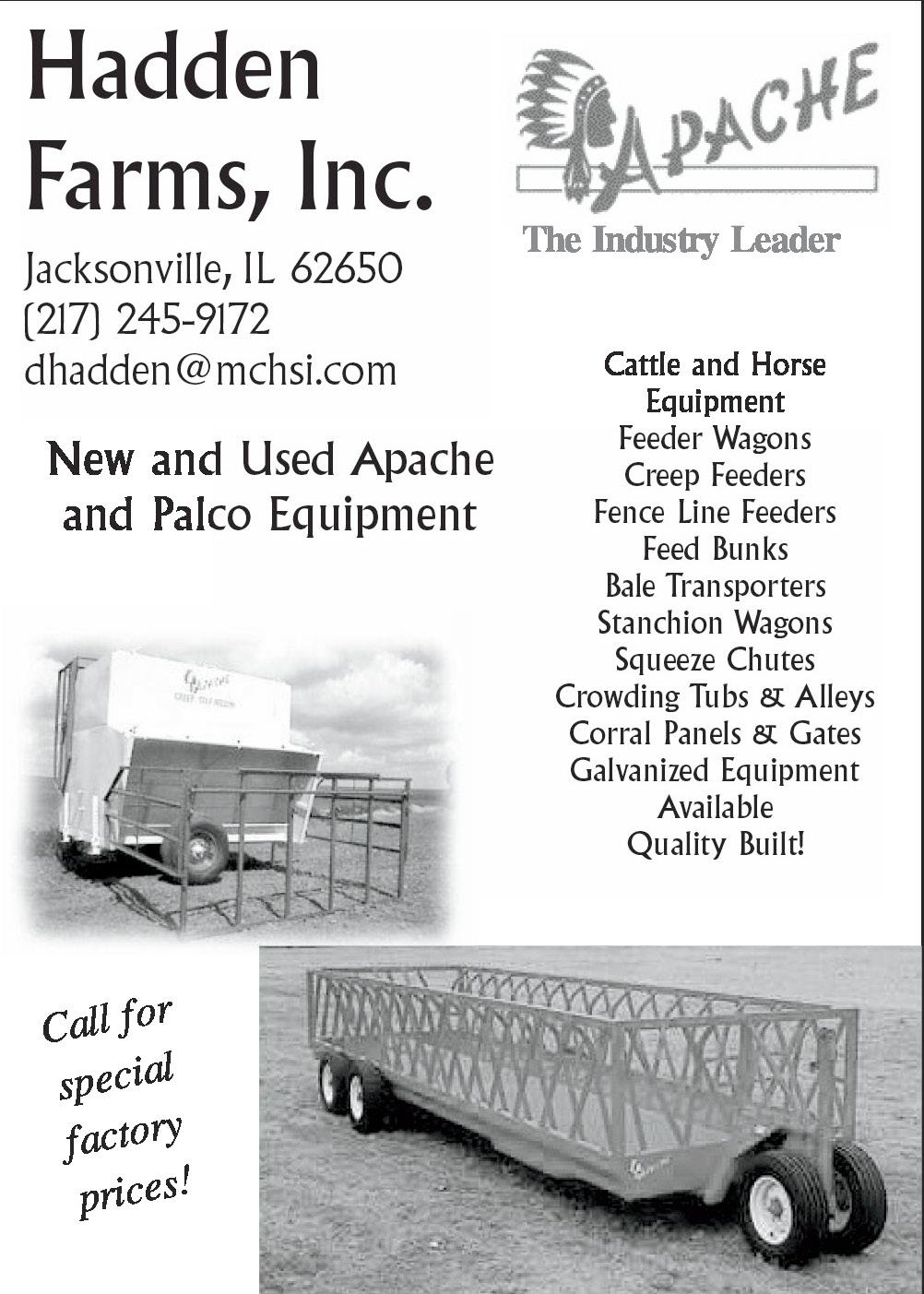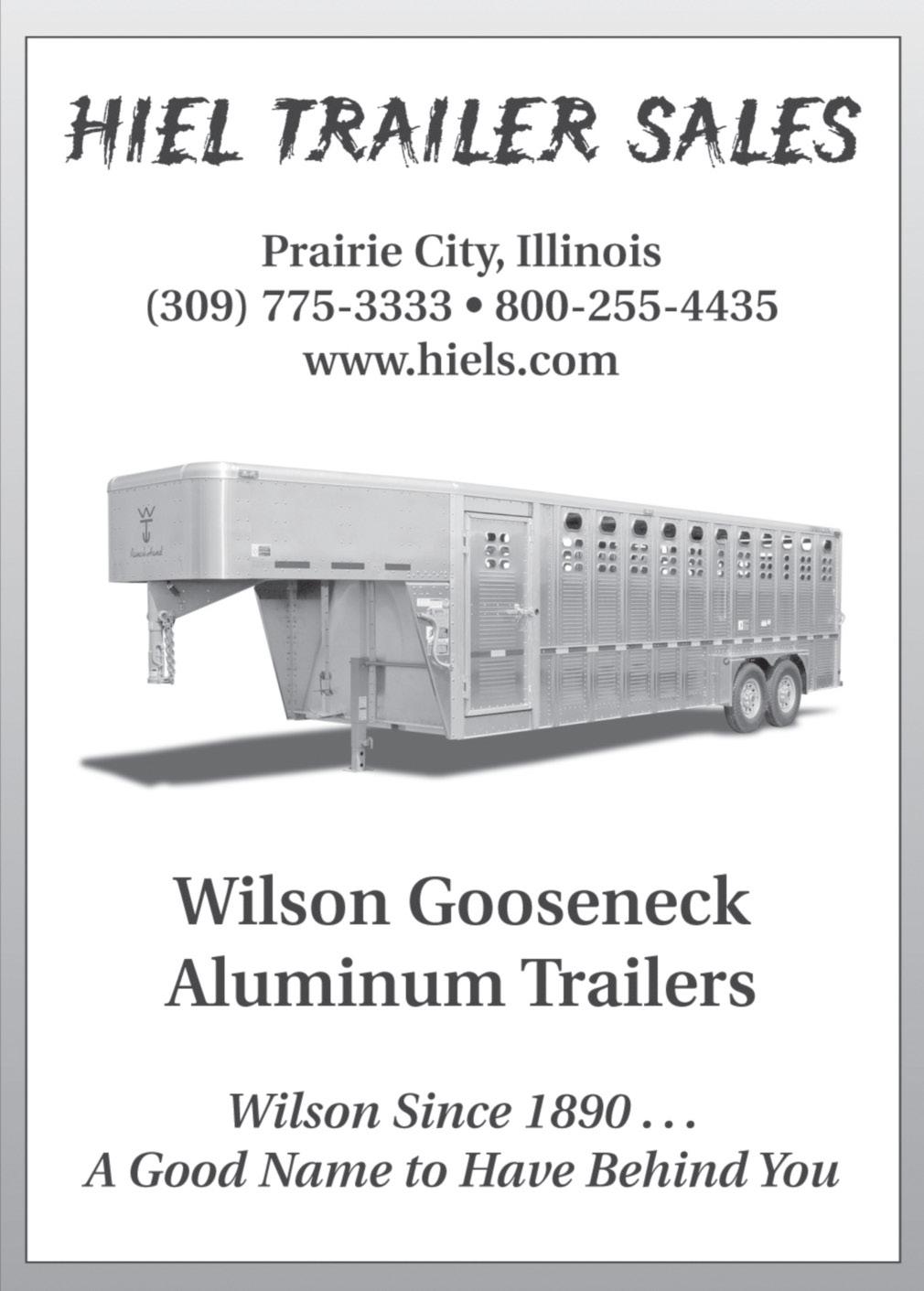
5 minute read
Extension Update
Travis Meteer, University of Illinois Extension Beef Specialist
Hay - Is it Worth it?
Advertisement
As we watch corn and soybean prices climb, feed costs have taken center stage for discussions on the cattle operation. While it is evident feedlot cost of gains are climbing because of higher corn prices, traditionally, hay is the most common feed ingredient for cow/calf producers. As we enter hay-making season and you prepare to evaluate feed needs this year, I think it is important to look at what hay is worth, what it costs, and whether your cattle operation should be in the hay business.
What’s it Worth?
Every ton of hay removes approximately 40 lbs. of N, 20 lbs. of P, and 50 lbs. of K. However, it is important to calculate N losses at about 75%, thus only about 10 lbs. of N are returned to the soil when hay is fed. The values of P and K are accurate to what would be returned.
Fertilizer prices for Illinois published by USDA (Apr. 8 report) are roughly: N $0.55, P $0.47, K $0.36.
Using current nutrient values, hay has a fertilizer value of $32.90 per dry ton. Assuming a 1200lb round bale is 15% moisture, the nutrient value per bale is $16.77.
If you are figuring what it costs you to make hay on your farm, add mowing, raking, and baling at approximately $20 per bale (Machinery Cost Estimates, University of Illinois Extension). As a result, a bale of hay sitting in the field costs $36.77.
Other costs would include moving the bales from the field, some additional time and labor in handling the bales, and the use of equipment to transport the hay. If yields are below average, nearly all costs increase.
Buying Hay vs. Growing Your Own Hay
The cost/value of hay stated previously may lead you to the question “Should I buy my hay or grow my own hay?”
While cost should be the primary factor, the correct answer depends on numerous factors. The list below helps illustrate these factors.
Buy Hay
• Limited land resources to use for hay production • Hay is available for purchase at an economical price • Busy, limited time to devote to hay production • Short on labor • Must purchase hay equipment, update old equipment • Set-up to handle by-product/alternative feeds • Have access to reliable hay source • Limited market for excess hay • Unable to store and carryover hay with little waste • Hay enterprise cannot self-support investment in equipment
Grow Hay
• Land available for hay production • Hay is hard to find or is too expensive to buy • Adequate time and flexible schedule to accommodate hay production • Labor needs are adequate or labor can be sourced economically • Some equipment costs can be shared with other enterprises • Absolutely need to control harvest time and hay quality • Lack of flexibility in feeding set-up, infrastructure is geared towards feeding hay • Good demand for hay, potential diversification of farming business • Can store excess hay, carryover hay with little waste • Hay acreage supports equipment payment and regular update of equipment
Even in cases where some aspects of the farm may support growing your own hay, the opportunity cost is too high and buying hay can allow better use of time and equipment to focus on more profitable portions of the farming operation. Farming practices like spraying or fertilizing row crops may be more economically important when compared to baling hay.

If you are purchasing hay, the fertilizer value of hay is important to consider, realizing that if these nutrients are evenly spread over pastures during winter feeding, the benefit could be quite large to helping distribute additional nutrients to poorer fertility sections of a pasture. With a little thought and management when feeding hay, producers can build pastures up, reduce manure handling, and help make the most out of purchased hay.
Land price and availability are big constraints on herd expansion. Diverting hay ground to managed pastures can be beneficial. Managed pastures allow longer grazing seasons, can allow increased herd size or stocking rates, and can result in lower fertilizer and fuel needs to support the cattle operation. Illinois has abundant sources of feed, but acreage available for pasture is limited. Thus, would you be better off grazing your hay ground?
Waste: Hay’s Biggest Problem
Hay storage and feeding can be extremely wasteful. Numerous studies have shown over 1/3 of the harvested forage is wasted during storage and feeding. Thus, hay as the primary feed ingredient in your cattle diet can result in high ration costs per head per day.
On the other hand, technology is helping reduce hay waste. Bale density has improved and storage losses can be reduced by proper storage or wrapping bales. Baleage has become a more popular form of hay production. While it does require more equipment, better feed value, less waste at feeding, and reduced storage loss has serious appeal. Good quality forages are hard to beat as the foundation of beef cattle diets. If hay is going to be a large part of your ration, focus on reducing storage and feeding wastes while maximizing nutrient value and hay quality.
Final Thoughts
I encourage you to have some hay on hand at all times. Good quality dry hay solves a lot of problems. It is a must for a drought management plan, weaning calf diets, getting sick cattle to eat, and helping transition cattle to different diets. Dry hay is a staple ingredient to have available when formulating cattle diets, but it does not need to be the entire ration or even the biggest part of the ration.
Illinois has abundant feed resources. Be innovative. Look for alternatives. Crop residues, cover crops for forage production, ethanol co-products, local by-products, or foodwaste stream feeds can all be opportunities to decrease and replace a portion of hay in cattle diets.
Every farm is different. Investigate what synergies may exist with harvested forages and your cattle operation. The ability to market extra hay at a premium and share equipment with other farm enterprises can result in a hay-making being profitable.
Increasing profit potential in a cow/calf operation hinges largely on controlling feed costs. Proven methods to control feed costs include reducing the need for purchased feeds, limiting hay feeding, and extending the grazing season. In larger cow/calf herds or more confined systems, utilizing alternative feeds and limit-feeding can help reduce feed costs. No matter herd size, feeding less hay generally results in greater profit potential.












